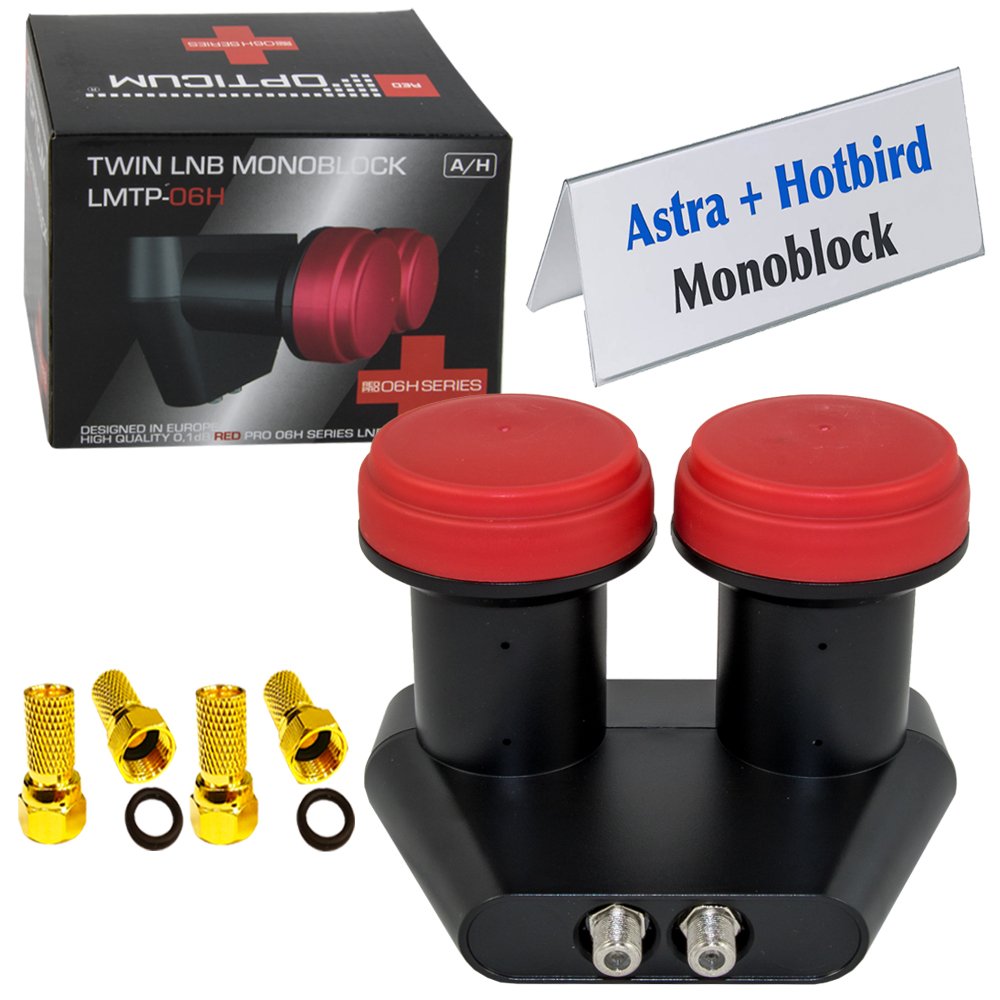

Some have specifications of 0.1 db but this makes no difference. Get one that has a noise ratio of under 0.9 db. Monoblock LNBs cost anything from about ‚£7 upwards for a Single Monoblock LNB‚ (to use with a single receiver). ‚ There are other options for receiving multiple satellites -‚ Limited range of satellites with Multi LNBs and fixed dish,‚ or, a wide range of satellites with motorised dish system (page coming soon).

You can get single output (receive the 2 satellites on 1 receiver), dual output (receive the 2 satellites in to a twin tuner receiver, or have 2 receivers) and quad output (4 receivers, or 2 twin tuners) Monoblock LNBs if you wanted to use separate satellite receivers. So to receive satellite signals from the 13 degrees East and the 19.2 degrees East positions, a 6 degree monoblock would be required. It is a fixed unit (all in one) multiple LNB solution and comes with the LNBs seperated by a certain amount of degrees, such as 3 degrees, 4.3 degrees, 6 degrees (6.2 degrees to be precise) or 9 degrees and is not adjustable (you can't change the separation to point at different satellites). A cable from the LNB then goes in to your satellite receiver.

The satellite signal then comes comes down from satellites in Earth's orbit, bounces off the dish and goes in to the Monoblock / LNB. (Instead of using multiple ‚ LNBs to pick up multiple satellite signals) (LNB stands for Low-Noise Block downcoverter - full technical info here.) A monoblock is the receiving unit which sits at the end of the satellite dish pole and points towards the dish. It is similar to using multiple LNBs‚ but in 1 sealed unit. A monoblock LNB is designed to receive TV signals from 2 satellites.


 0 kommentar(er)
0 kommentar(er)
